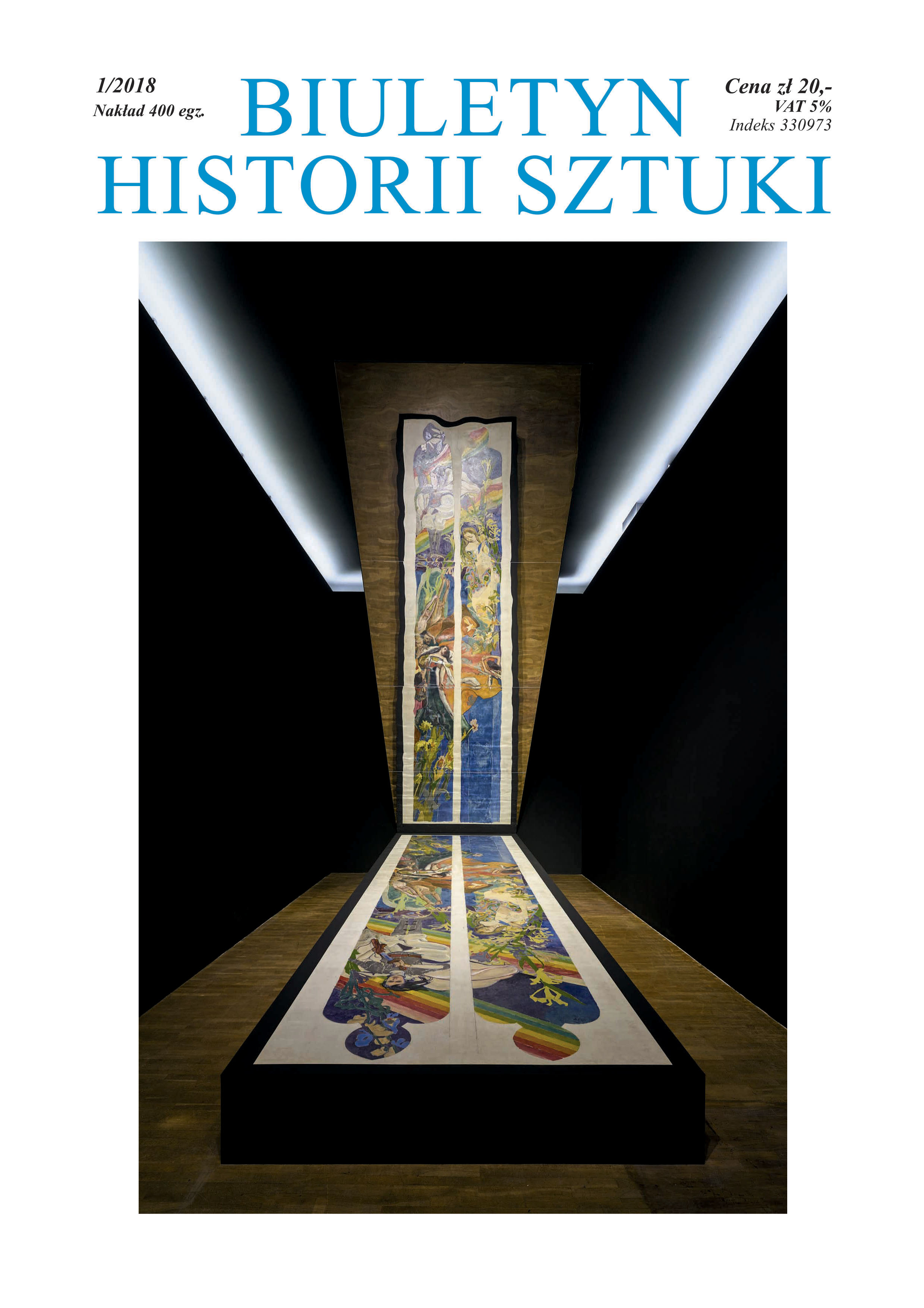
We kindly inform you that, as long as the subject affiliation of our 300.000+ articles is in progress, you might get unsufficient or no results on your third level or second level search. In this case, please broaden your search criteria.

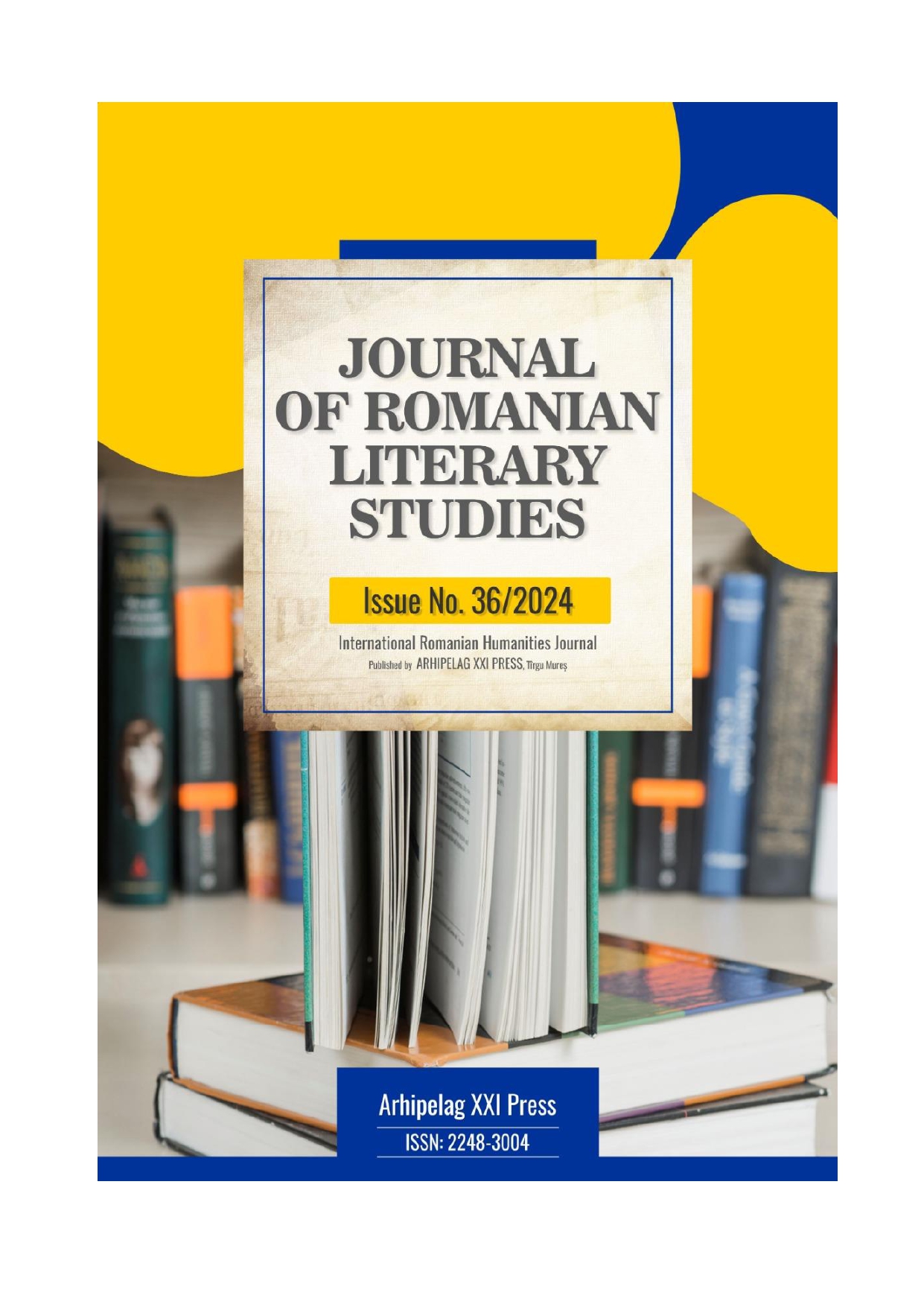
The present material has as a focus point the existence of Art, of that Art having its true meaning (which is also quasi-updated), the difference being there where artistic manifestations were not then created for aesthetic reasons, but utilitarian one: magical-religious. Therefore, we are compelled to admire even more the high degree of artistry of rupestral representations, and also the evolutive steps made from realism to styling and then back to abstractization – which is born in the human brain once one makes associations and generalizations. Belonging to the dominant culture of the Superior Paleolithic, the Aurignacian (the sculptures of the type Venus are specific to the Gravettian), the painting shows the freshness of perception and the vision of the artist from that time, having not the boundaries of nowadays, but especially the aesthetic taste which is undeniably part of the primitive, appart from the utilitarian purpose, the daily needs.
More...
The topicality and importance of the theme addressed in this article are determined by the extent of the phenomenon of academization of the most performing types of chromatic harmonica by adopting the traditional genres of European instrumental music, including the sonata. The historical evolution of the sonata for accordion / bayan, reflecting various stylistic orientations and trends of contemporary composition, is presented randomly, being primarily examined in the creation of a certain composer. A large part of the investigations is devoted to the elucidation of the specific peculiarities of the works composed in the period of 1970-1980 by Russian and Ukrainian musicians. Most of the studies carried out by European scholars are limited only to informative materials (brochures, annotations etc.), failing to identify and formulate the defining characteristics of the sonata within certain schools of composition.
More...
In the present study, we propose to identify the structural elements of sound discourse, as well as their manifestation in the concept of the work Fantasy on a theme by G. Enescu for clarinet and orchestra by Oleg Negruţa. The author’s compositional records include vocal, instrumental chamber, concert and symphonic music. Most of his creations are attributed to concert and chamber music. The work that we are going to analyze serves as proof of the novelty of the genre, form and elements of writing. Fantasy as a genre represents an instrumental or orchestral work with a fairly free architecture, and the basic principle is improvisation. In this piece, we highlight one of the distinctive features of the composer, namely the folkloric stylistic direction - the use of folkloric species such as doina, sarba, hora, organically combined with elements of the classical language - genre, form, theme, etc. Equally important is the use of the quote, which O. Negruţa creatively develops and exposes in different sections, creating a thematic core, but also a sound reagent for the entire musical discourse.
More...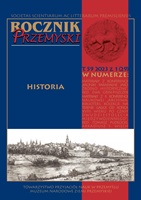
Review of: Cultural and Artistic Transfers in Theatre and Music. Past, Present and Perspectives, red. Michaela Mojžišová, Bratislava: Veda 2021, 268 s.
More...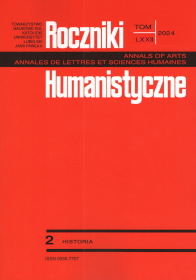
This paper explores the situation faced by Polish theatre and theatre professionals during the Soviet occupation of Lviv between 1939 and 1941. The Soviet authorities aimed to undermine Polish national culture by severing its roots and attempting to establish a new, foreign Polish-Soviet tradition. Consequently, Polish theatre was compelled to engage in propaganda activities aligned with the goals of the occupying state. The Soviet regime devised a cunning trap for Polish artists. On the one hand, it instilled fear through repressive measures against all Poles. On the other hand, it provided a certain level of security for theatrical professionals, treating them more leniently compared to their compatriots. Some individuals displayed extreme opportunism, actively parti- cipating in propaganda activities, while others took a more passive approach. However, there were also heroic attempts made by some to resist the occupiers, primarily through underground initiatives, often organised within Lviv’s Catholic Churches.
More...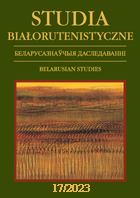
At the beginning of the 21st century, the societies of the post-Soviet countries are still faced with the problem of determining its position in relation to the Soviet past and selfidentification of national identity. The popularity of the nostalgic narrative about the lost socialist world order, actively supported by official propaganda in some countries, led to a paradoxical metamorphosis – the project of the future socialist society has become a symbol of conservative values and a glorious heroic past. Since the beginning of the 40s of the 20th century in the literature of the medium memory a mythologizing vision of the Second World War has become subjected. The subject of the article is the analysis of the drama of contemporary Belarusian writer Nikolai Rudkovsky “Дожить до премьеры” (“Live to See the Premiere”). Exploring the theme of war, the playwriter shows the evolution of the perception of a memorable event: from the high rank of a historical fact to the experience of an individual, doomed to operate in a warlike reality. The playwriter interprets collective memory and the Soviet, Russian and Belarusian literary canon in reference to various types of metatexts corresponding to the theme of war.
More...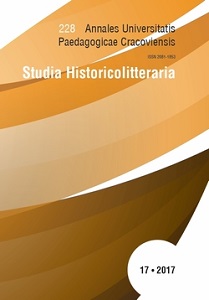
In Historie florenckie Ewa Białkowska focuses on the vast cultural heritage of Renaissance Florence, however, she begins by mentioning a disastrous flood of the 1960s that could have easily ruined said heritage. The present article aims at presenting the main ideas of the book and more importantly to pinpoint those elements that contribute to its originality. Even though Historie florenckie focus mainly on showing the most important works of art of Tuscany’s capital, in their descriptions a vital role is played by identifying the relationship between a piece of art and a human, between culture and society in which it is created. The interaction between human and art appears to be the most interesting aspect of the book.
More...
Report on Conference “Directors of Krakow stages in the years 1945–1989: famous, less known, worth remembering”, held at Pedagogical University of Commission of National Education in Krakow, from 19th to 20th of October, 2017.
More...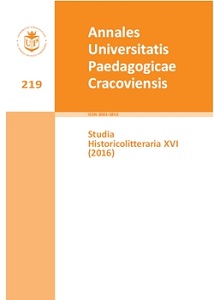
The National Digital Archives stores the audio-visual contents of Jerzy Ficowski’s legacy – photos, audio recordings, and films. The most numerous type of data found there are photographs. Many of the photos are representative of Ficowski’s research interests. There are Gypsy photos (especially those taken by him while traveling in Gypsy caravans), Judaica, photos regarding Witold Wojtkiewicz and Bruno Schultz (particularly those taken by Jerzy Ficowski during his stay at Drohobych), photos taken by Ficowski as illustrations for „Karty z raptularza”, portraits and photos of Jerzy Ficowski himself and of his family. As far as audio recordings are considered, there are private records, monologues, radio interviews, Judaica, and recordings of poetry readings. Another important preserved form of Ficowski’s legacy are films of his family, recorded between 1930 and 1936, records of performances, klezmer concerts, poetry readings, video relation of the ceremony of awarding him with the “Man of Borderland” title, and drafts for film of Paweł Woldan “Amulety i definicje” (1998).
More...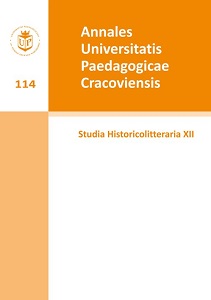
The hybrydity the Young Poland’s modernist literature stems from the ideology of correspondence between literature and arts. Wacław Rolicz-Lieder’s Modlitwa na organy (A Prayer for Pipe Organ) from the Poems III (1895) volume presents links between literature and music. The poet’s fondness for music and his attempts at composing it testify to his sensitivity for musical qualities of language. Rolicz-Lieder was constantly looking for new verse structures, he probed the musicality of his poetic phrases, resorted to musical forms of expressions (e.g. fugue, coda), created multi-sensory synaesthesias with a prominent acoustic component. These features can be observed also in A Prayer for Pipe Organ. The relationship between the two parts of the diptych (the lullaby and ‘the wake-up song’) can be described as a figure of speech called chiasmus, whereby two structures, analogous in terms of semantic content and syntactic construction, are symmetrically reversed. Rolicz-Lieder’ diptych is a conscious artistic design, mirroring the specificity and technical capacities of the eponymous organ. Although the referential scope for music is ultimately determined by literary forms, the poet manages nevertheless to reproduce a musical composition in literature.
More...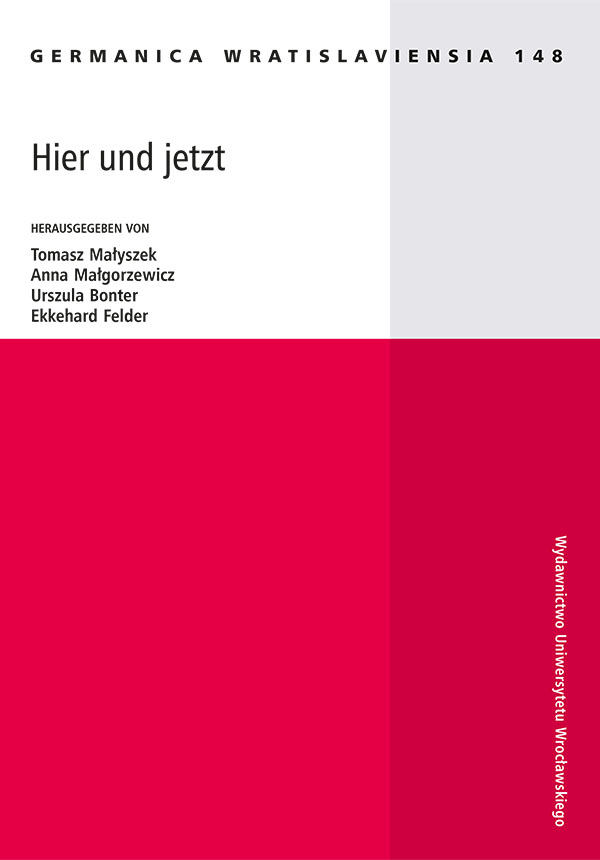
This article aims to provide an overview of moments in the history of the city of Wrocław that can be treated as caesuras in the study of the history of consumption and, moreover, to point to the cap- ital of Lower Silesia as an ideal example for tracing these processes. This is influenced by the rich geopolitical, migratory history of this city, which has an impact on the contemporary functioning, perception and logic of the city. Research in this area, not only in the context of Wrocław, is only at an early stage. However, they make it possible to learn not only about the processes of consump- tion, but also about leisure time behaviour, broadly defined culinary culture, tourism and theater. The history of consumption is the easiest way to study everyday culture.
More...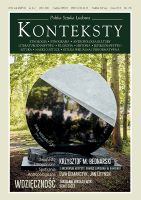
The author of this sketch embarked upon an attempted contextual analysis and interpretation of a poem by Reiner Kunze. By referring to male and female poets listed by the German author – Rose Ausländer (poetess of “green Bukovina”, the poem’s motto), Paul Celan (as a Czerniowce/ Černivci and European patron of post-Holocaust loss), Elie zer Sztejnbarg – author of Majselech (Tales) from Czerniowce as well as others, including Polish translators Ryszard Wojnakowski, Ryszard Krynicki, and Jakub Ekier – an attempt was made to describe the co-ordinates of poetic mourning shared by Kunze with poets from Czerniowce. All against the backdrop of the genius loci of the capital of Bukovina and in conjunction with the plight of this unique town.
More...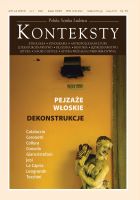
Rzym od wieków przyciąga twórców z całego świata. Pozostaje pytanie: na ile życie w Wiecznym Mieście dla współczesnego artysty jest inspirujące, a na ile przytłaczające czy wręcz paraliżujące swym bezkresnym pięknem?
More...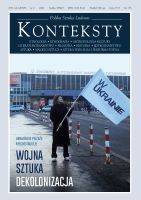
A sketch about Vasyl Yermylov (1894–1968, Kharkiv), founder of the Ukrainian faction of constructivism.
More...
The desacralisation of churches, as a widespread phenomenon in Europe, has left its mark on states with a prolific secular character, leaving room for intervention on the material religious heritage in an innovative way. The architect has thus the opportunity to shape the space of a church in a new way, with different mechanisms and techniques of intervention in order to adapt the inert tectonics to the new values of the contemporary world. The re-inclusion of non-functional churches in society through new architectural programmes inserted in their desacralised structural shell is the main aim of the initiative to preserve and refunctionalise it. The search for functional alternatives suitable for the new context for the old structure is the main challenge the architect faces in the design process. As each church is placed in a different context with its own social, cultural, economic and political characteristics, the process of refunctionalisation is one rooted in the specificity of the place. The process involves a number of experts from related fields, who work upon a diagnosis of the area and elaborate a suitable hypothesis to design a new function of the old church. Thus, from an empirical point of view, the materiality of the church continues, although the values it served have lost their relevance. It can accommodate new functions that meet the current needs of the neighbouring community. The challenge is to identify and manage the specific elements of each church as an architectural object at the confluence of several socio-economic factors and, secondly, to define an alternative solution for the originally sacred function.
More...
In an overview of color, in its various forms of appropriation or expression, this is an integral element of the environment, represented by the living organisms of the natural environment and by different man-made creations. Color has always been a key of importance in the evolutionary processes of the human habitat, influencing people’s emotional states from the first forms of shelters to the huge urban concepts. The environment and its diverse colors, with which it naturally appears to us, are perceived by human intelligence through objective or subjective processing and judgment of visual information. This information, complemented by communication, can influence the psyche in the processes of analysis, presentation and objective materialization. The effects are substantially generated by the external appearance of the volume, expressed by colors, with a decisive role for the context of which it is part. This paper studies color as an attribute of the natural environment, but also as an intervention of human activity, truly important to achieve aesthetic or decorative values, but especially to satisfy the needs on whose existence human evolution may depend on. Part of the color study will be approached in a comparative manner, between the natural and urban environment, on various important directions of specific fields, where human decision can improve, alter or destroy the image of the architectural object or the urban one. The relationship between the two environments will also be touched upon, through which the building can achieve a visual and functional connection, integrating sustainably through form, adapted materials and associated colors. This research starts with the study of the psychological effects of colors in the field of architecture, with a focus on the role of the creator to influence the viewer’s perception through the organized and coherent use of a chromatic palette, the ultimate goal being the acquisition of studied ways of applying shades indifferent contexts, through various textures.
More...
This paper presents translation methods of innovative mapping approaches, from paper-based techniques from historical periods to the digital realm for 3 case studies: Bucharest, Lisbon and Rome. Such paper-based techniques are the 18th century’s city map of Rome (by Giambattista Nolli), the 1950s-60s psycho-geographical maps developed by situationists (Guy Debord) and novel visual layouts from architects and urban planners (Kevin Lynch, Saverio Muratori). A previous mapping developed by Bostenaru and Panagoupoulos (2014) of the 18th century Lisbon earthquake, based on a chronicle azulejos engraving of the event, is also considered as a base point for a more modern perception visualization of this location. Digital techniques include story maps and layered mapping. Several story maps types were investigated for walking or cycling tours. These kinds of tours are a method of investigation, more suitable in architecture than in geography, as reviewed for Rome. Photography is another such instrument and the path taken in the story map is suitable for this. The charted buildings span from 20th century heritage, to sites relevant for the effects of earthquakes, the latter for Bucharest and Lisbon. The Rapid Visual Screening method (RVS) focuses on the structural material in Bucharest, while heritage habitat approaches emphasize the role of green materials, for Lisbon and Rome. Innovations in the paper maps as well as scenario thinking (Helmuth Kahn) permit differentiating between emblematic and common buildings, which can be achieved digitally through story maps. As the example of Lisbon shows, a further step may be creating VR and 3D models or video content. In conclusion, these story map tools are useful to investigate layers of the city, for writing urban places.
More...
The Earth is a dynamic system, yet our understanding of this system relies on fixed, human-imposed lines, measurements and boundaries, which obscure those dynamics. The tension between the fixed nature of our modes of representation and the dynamic nature of the Earth’s system becomes increasingly apparent in the context of accelerating global environmental changes. Rising temperatures on the Earth’s surface are changing climatic zones around the planet and creating complex shifts in ecosystems. Landscapes are changing as sea levels rise, deserts increase and the tropics expand, urging people to improve their ways of representing, monitoring and caring for their surroundings. As such, memory, empathy and experience are central elements of this paper as it discusses environmental changes through the lens of the architectural material. The challenge of translating between abstract global images and the human experience inhibits individual, empathetic awareness of the planetary scale of climate change. As such, this paper aims to identify ways in which the architectural material can help bridge the gap between individual and planetary scales of change while mediating cultural and environmental loss. Through an interdisciplinary approach that draws from academic fields such as geography, earth sciences, architecture and environmental studies, this paper examines the historical development of fixed representations of the Earth’s systems to propose enhanced ways of viewing, understanding and representing the planet within change. Exploring the architectural material as a palimpsest, the following paper investigates the potential of materials to become sensors as they employ their ability to record aspects of environmental change, storing them as memories. As such, the scientific and emotional data accumulated through the architectural material could enable both emotional and physical resilience, and, through its representation, facilitate an empathetic awareness of the environmental crisis humanity currently faces.
More...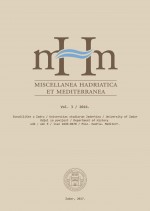
The relief depicting John the Evangelist which was once embedded in the Church of St. Jerome on Marjan is a palimpsest of a Roman funerary monument. Since the removal, it has been visible from all sides, and this paper first presents their description. The upper side is particularly interesting as it bears the remains of an insertion groove. In the author’s opinion, the figure of the saint was made by reworking a portrait of a woman in the Eumachia-Fundilia statue type. This means that the hair was also re-carved from some characteristic female coiffure and that the object in the left hand (etui with a pen or a pen?) was made of drapery or some typical female attribute. Considering the manufacturing process and shaping of the front with two joint niches, the relief from Split could have been formed only from a monumental stele or a relief incorporated into a larger funerary object. There are no comparable examples in Salona and its close hinterland meaning that it was a monument of peculiar rendering, i.e. a previously unknown typological variant. Since several elements contradict the thesis on attribution to the embedded relief (presence of an inscription, portrait format), the author supports an opinion that it was a monumental stele made after a northern Italic model.
More...